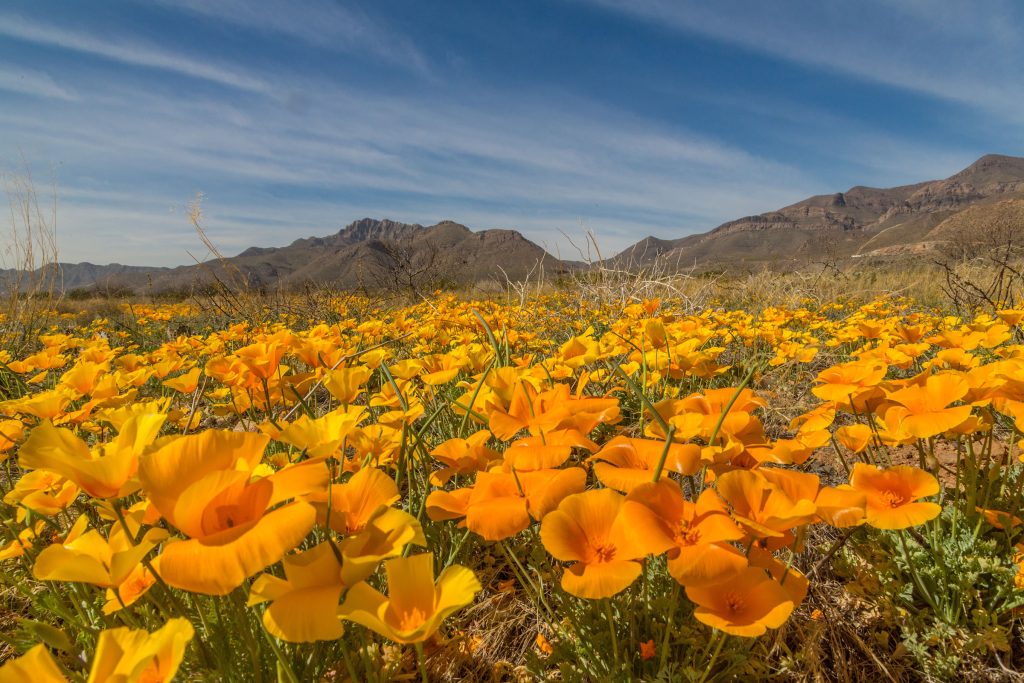
Golden poppies near Fort Bliss. Photo by Will van Overbeek
It’s poppy season in El Paso. The wildflowers are in full bloom throughout the region, accenting the city’s Chihuahuan Desert slopes with brilliant sunset hues of orange and yellow. The show usually begins in late January and lasts through early April. With spring rains, the bloom can extend through mid-May.
This year’s bloom is considered the best in the last 3 years, with much of the phenomena occurring across the eastern slopes of the city. For the best view, pull into the parking lot for the El Paso Museum of Archaeology and the National Border Patrol Museum at 4301 Woodrow Bean Transmountain Drive. The Museum of Archeology is also the host of the annual Poppies Festival, scheduled for Saturday, March 23, from 10 a.m. to 4 p.m. The festival includes free shuttles for parking off-site, admission to both the museums, live performances, exhibits, films, nature trails, archery, food trucks, and about 50 art vendor booths.
The city’s poppy variety, the Mexican Gold Poppy (Eschscholzia californica ssp. Mexicana), can be found throughout the Southwest from West Texas to California. It is of special value to bees, emitting a spicy fragrance and enhancing a powerful visual impact with a sensory delicacy. Like many plant species, the poppies also contain toxins of varying degrees, dependent on plant parts and growth stage, and shouldn’t be ingested. Nor should they be picked.
“Each flower is needed for the plant to produce more seed for next year’s bloom,” explains Jeff Romney, Director of the El Paso Museum of Archaeology.
Although the poppies are native to the region, a number of myths circulate about their local origins, including unlikely scenarios featuring plane drops, National Guard troops, newlyweds, and Japanese gardeners. The rumors trace back to a 1931 city-wide campaign, sponsored by the now-defunct El Paso Herald Post, which encouraged readers to fund seeding “…the mountain sides and mesas near El Paso with poppies, bringing nearer to the city the beauties of the poppy fields which annually attracts thousands of El Pasoans to the slopes of the Franklin range 10 miles north of town.” The plan, called the El Paso Poppy Club, included a $5 membership fee which financed the distribution of 200 pounds of poppy seeds across the foothills above the city.








